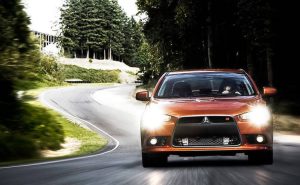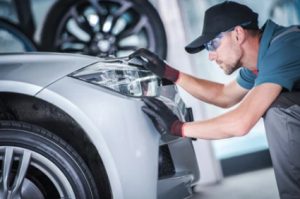Vehicle lighting is essential for safe driving, but it also has a direct impact on your car’s electrical system and energy consumption. From headlights to interior bulbs, every lighting component draws power — usually from your vehicle’s battery and alternator. While this drain is normally manageable, inefficient lighting can reduce battery life, strain the alternator, and even lower fuel efficiency in modern cars.
This article explores how lighting affects energy use and how smart lighting choices can reduce drain, extend component life, and improve overall vehicle performance.
How Car Lighting Affects Energy Consumption

Every light on your car, from dome lights to taillights, draws electrical current. The power source is typically a 12V car battery, which is recharged by the alternator while the engine runs. However, inefficient lights — or excessive use — can lead to issues such as:
-
Battery drain (especially in stop-and-go driving)
-
Increased alternator workload
-
Faster wear on electrical components
-
Reduced energy available for other systems (infotainment, sensors)
Power Draw Comparison by Light Type
| Light Type | Power Consumption (Per Bulb) | Typical Location |
|---|---|---|
| Halogen Headlight | 55–65 watts | Headlights |
| HID Headlight | 35–45 watts | Premium headlights |
| LED Headlight | 15–25 watts | Modern cars/upgrades |
| Interior Halogen | 5–10 watts | Dome, map, trunk lights |
| Interior LED | 1–3 watts | All cabin areas |
| Halogen Taillight | 21 watts | Brake, rear lights |
| LED Taillight | 2–5 watts | Brake, rear lights |
LEDs consume up to 80% less power than halogen bulbs — and last significantly longer.
The Impact of Inefficient Lighting
While lighting may not seem like a major energy consumer, the cumulative effect adds up, especially in vehicles with high electrical demand (hybrids, EVs, or luxury models). Here’s how inefficient lighting can affect your car:
1. Battery Drain
Halogen or outdated bulbs left on by mistake (e.g., trunk light, interior dome) can drain the battery overnight.
2. Fuel Efficiency Loss
In conventional vehicles, the alternator draws engine power to recharge the battery. Heavier electrical loads can slightly increase fuel consumption.
3. Faster Wear on Components
Running inefficient bulbs increases heat output, which can degrade wiring, fuses, and lenses.
How to Improve Car Lighting Efficiency
You can significantly reduce energy consumption and extend component life by making targeted upgrades and adopting smart usage habits.
Upgrade to LED Lighting
Switching from halogen to LED lighting is the most effective way to improve efficiency.
LED Benefits:
-
Lower energy use (2–5W vs. 21W+)
-
Longer lifespan (up to 30,000 hours)
-
Brighter and clearer illumination
-
Cooler operation (less heat damage)
Common LED Upgrade Areas:
-
Headlights
-
Taillights and brake lights
-
License plate lights
-
Interior cabin lights
-
Trunk and glovebox lights
Use Lighting Responsibly
Reduce unnecessary electrical load by practicing good lighting habits:
-
Turn off interior lights manually when not needed.
-
Avoid using headlights when idling (unless required).
-
Use automatic light settings if available.
-
Inspect that door switches and trunk lights shut off properly.
Maintain Electrical System Health
Efficiency isn’t just about the bulbs — it’s about the whole electrical system.
| Maintenance Task | Benefit |
|---|---|
| Check battery condition | Prevent power dips and dimming lights |
| Inspect alternator output | Ensure proper recharge and load handling |
| Clean and secure connections | Prevent resistance and voltage loss |
| Replace aging fuses/relays | Avoid flickering or intermittent light failures |
Real-World Savings from Efficient Lighting
Upgrading a full vehicle’s lighting system to LEDs can result in measurable improvements in energy efficiency, especially for vehicles frequently used at night or with many accessories.
| Upgrade Area | Power Saved (Estimated) | Added Benefits |
|---|---|---|
| Headlights | ~60–100W total | Better night visibility |
| Interior Lights | ~10–20W total | Extended battery runtime |
| Rear Lights | ~30–40W total | Sharper brake signals |
Even minor improvements can make a big difference in hybrid or EV performance, where energy conservation is critical.
When to Replace or Upgrade Lighting

If you notice any of the following, it’s time to inspect or upgrade your lighting system:
-
Flickering or dim headlights
-
Battery frequently dies after short stops
-
Lights remain warm long after being turned off
-
Interior lights stay on unexpectedly
-
Old halogen bulbs reaching end of life (typically after ~500–1000 hours)
Lighting Efficiency Checklist
Before your next drive or service visit, go through this quick checklist:
Are your headlights LED or halogen?
Do all interior lights turn off automatically?
Is your battery in good condition?
Are any light housings excessively hot?
Have you replaced old bulbs with energy-saving ones?
If the answer to any is no, you may be overdue for a lighting upgrade.
Ready to Make Your Car More Efficient?
Upgrading your car’s lighting isn’t just about looks — it’s about energy savings, safety, and system longevity. Whether you’re looking for LED headlights, energy-efficient taillights, or interior bulb replacements, it’s important to use quality, compatible components.
Buy Car Lighting online for a wide selection of efficient, long-lasting lighting options for all vehicle types. Find products by vehicle model, lighting type, and performance need.
Final Thoughts
Efficient lighting is one of the easiest and most affordable ways to optimize your car’s energy use. By replacing high-drain bulbs with LEDs and maintaining your electrical system, you can:
-
Save power and fuel
-
Extend battery and alternator life
-
Improve visibility and driving safety
-
Reduce maintenance and replacement costs
Don’t wait until your battery fails or your headlights go dark. Take a proactive step toward energy-efficient driving today.
Buy Car Lighting online and upgrade your vehicle’s lighting system for better performance and less drain.